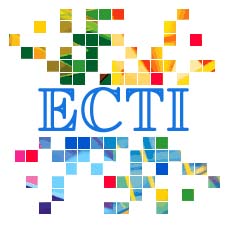Sum-Rate Upper Bounds for the Gaussian X Channel with Limited Receiver Cooperation
Main Article Content
Abstract
In this paper, we propose sum-rate upper bounds in terms of the sum of 3 rates and the sum of 4 rates for the two-user Gaussian X channel with limited receiver cooperation. These upper bounds are derived by using the Fano's inequality, the data processing inequality and genie-aided techniques. Then, we explore the generalized degrees of freedom (GDoF) of the proposed upper bounds with a symmetric channel setting. By setting a certain set of parameters, the received results show that our results are identical to the existing results for both non-cooperation and limited receiver cooperation cases. Moreover, we obtain that the GDoF computed from our proposed
upper bounds are greater than the GDoF of those in the non-cooperation case.
Article Details
This journal provides immediate open access to its content on the principle that making research freely available to the public supports a greater global exchange of knowledge.
- Creative Commons Copyright License
The journal allows readers to download and share all published articles as long as they properly cite such articles; however, they cannot change them or use them commercially. This is classified as CC BY-NC-ND for the creative commons license.
- Retention of Copyright and Publishing Rights
The journal allows the authors of the published articles to hold copyrights and publishing rights without restrictions.
References
[2] O. Koyluoglu, M. Shahmohammadi, and H. El Gamal, "A new achievable rate region for the discrete memoryless X channel," in Proc IEEE Int. Symp. Inf. Theory, Seoul, South Korea, Jun-Jul. 2009, pp. 2427-2431.
[3] C. Huang, V.R. Cadambe, and S.A. Jafar, "Interference alignment and the generalized degrees of freedom of the X channel," IEEE Trans. Inf. Theory, vol. 58, no. 8, pp. 5130-5150, Aug. 2012.
[4] R. Prasad and A. Chockalingam, "Capacity bounds for the Gaussian X channel," in Proc Information Theory and Applications Workshop (ITA), San Diego, United States of America, 2013, pp. 1-10.
[5] U. Niesen and M.A. Maddah-Ali, "Interference alignment: from degrees of freedom to constant gap capacity approximations," IEEE Trans. Inf. Theory, vol. 59, no. 8, pp. 4855-4888, Aug. 2013.
[6] M. Cao, X. Wang, S-J. Kim, and M. Madihian, "Multi-hop wireless backhaul networks: A cross-layer design paradigm," IEEE J. Sel. Areas. Communications, vol. 25, no. 4, pp. 738-749, Apr. 2007.
[7] I-H. Wang and D.N.C. Tse, "Interference mitigation through limited receiver cooperation," IEEE Trans. Inf. Theory, vol. 57, no. 5, pp. 2913-2940, May 2011.
[8] O. Simeone, O. Somekh, H.V. Poor, and S. Shamai, "Distributed mimo systems for nomadic applications over a symmetric interference channel," IEEE Trans. Inf. Theory, vol. 55, no. 12, pp. 5558-5574, Dec. 2009.
[9] F.M.J. Willems, "The discrete memoryless multiple access channel with partially cooperating encoders," IEEE Trans. Inf. Theory, vol. 29, no. 3, pp. 441-445, Mar. 1983.
[10] L. Zhou and W. Yu, "Gaussian Z-interference channel with a relay link: Achievability region and asymptotic sum capacity," IEEE Trans. Inf. Theory., vol. 58, no. 4, pp. 2413-2426, Apr. 2012.
[11] H.T. Do, T.J. Oechtering, and M. Skoglund, "On asymmetric interference channels with cooperating receivers," IEEE Trans. Communications, vol. 61, no. 2, pp. 554-563, Feb. 2013.
[12] M. Ashraphijuo, V. Aggarwal, and X.Wang, "On the capacity and degrees of freedom regions of the two-user MIMO interference channels with limited receiver cooperation," IEEE Trans. Inf.
Theory, vol. 60, no. 7, pp. 4170-4196, Jul. 2014.
[13] S. Tan-a-ram and W. Benjapolakul, "Achievable Rate Region for the Two-User Gaussian X Channel with Limited Receiver Cooperation: General Case," IEICE Trans. Fundamentals, vol. E100-A, no. 3, pp. 822-831, Mar. 2017.
[14] T. S. Han and K. Kobayashi, "A new achievable rate region for the interference channel," IEEE Trans. Inf. Theory, vol. IT-27, no. 1, pp. 49-60, Jan. 1981.
[15] R. Etkin, D.N.C. Tse, and H. Wang, "Gaussian interference channel capacity to within one bit," IEEE Trans. Inf. Theory, 2008, vol. 54, no. 12, pp. 5534-5562, Dec. 2008.
[16] G. Bresler and D.N.C. Tse, "The two-user Gaussian interference channel: A deterministic view," Eur. Trans. Telecommun., vol. 19, no. 6, pp. 333-354, Jun. 2008.

